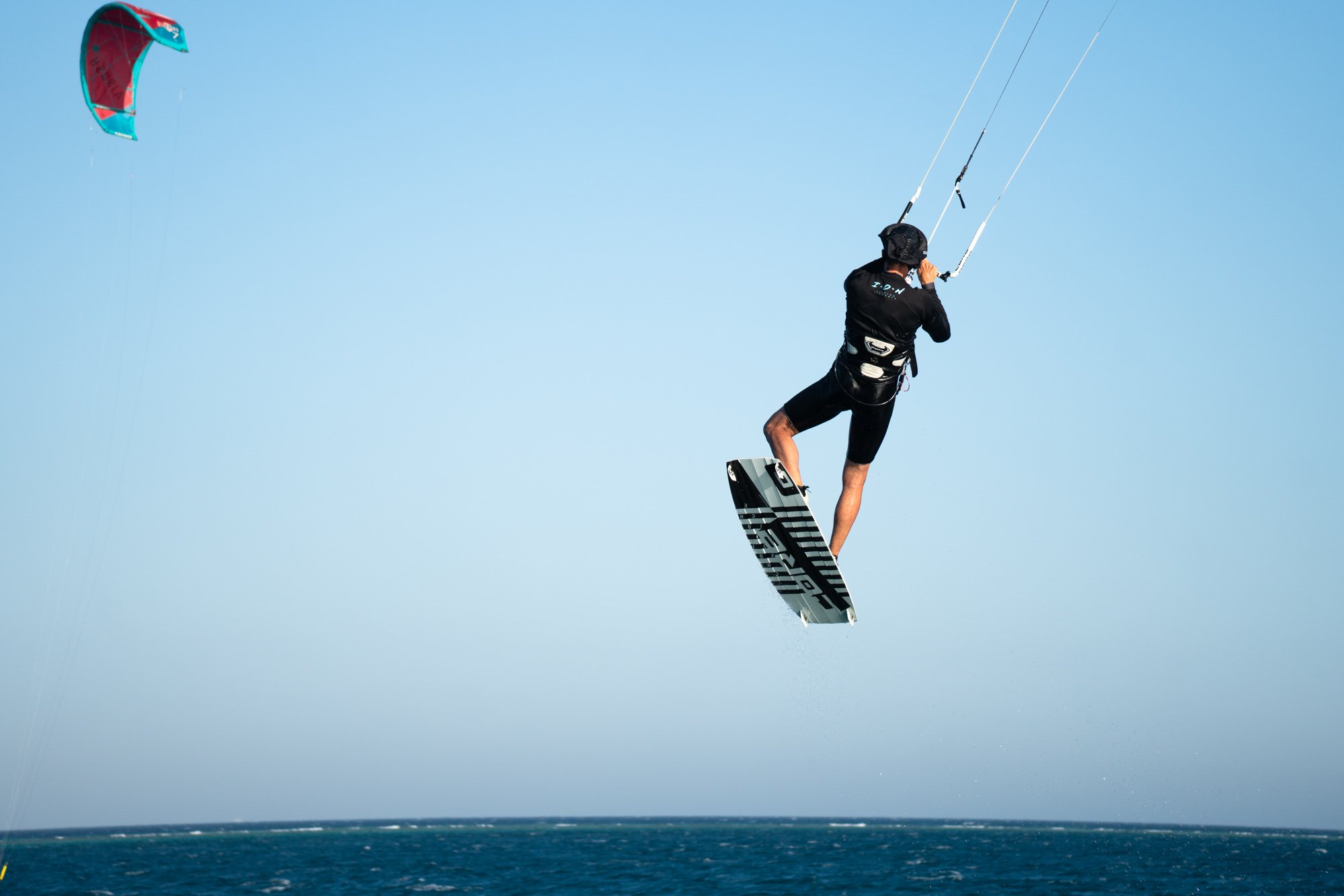Brendan’s kitesurf training guide & trick list
Brendan’s kitesurf
training guide & trick list
“If you’re looking to learn new tricks and progress fast, efficiently and safely then you’re in the right Place” Tait Ovens
I have made this short guide and trick list to hopefully help guide you through your kitesurfing progression and help you make sure to learn the right tricks at the right time. This should not only allow you to improve faster and more efficiently but also help you stay safe by not learning tricks too far ahead of your current ability.
There are many brilliant resources and tutorials across the web as well as some great books, however, I have found these can often be overwhelming with too many options and variety without such a clear path through.
Over the last years, I have helped many friends, family, clients and team members through these stages, breaking down each individual trick into simple stages that were possible. I have seen that many people are often trying to learn the wrong trick that's too advanced for their level but most of the time people are unsure of what to learn next.
Helpful Tips & Common downfalls
Here are a few tips to help you progress and hopefully get you in the right mindset.
Kite the day, not your desire
Perhaps you turn up at the kite spot and it is more choppy, gusty or busier than usual. It just might not be the best time for you to learn that new trick you wanted to. Rather than getting frustrated for the following 2/3 hours trying to learn in unsuitable conditions it’s best to consolidate and improve the tricks you can already do or adding small variations. For example, a different type of grab when doing a backroll or working on extension of one leg to tweak it.
When the right conditions present themself, go for it!
When the conditions are optimal for what you are trying to learn - make the most of it! I am not saying go for it blindly or non-stop but do make the most of perfect conditions and try to understand what the right conditions you require for what you're trying to learn; Strong wind, flat water, small vs big kite, powered up, underpowered.
Understand what kite sizes are best for which tricks
If it’s 12m weather but you want to learn kite loops it’s going to be a better day to learn something else. Likewise, if it’s howling, and you are on a 7m it might not be the best day for learning board offs if the forecast for the following day is lighter wind, as you could then use a bigger kite which gives you more stability in the air.
If you can, kitesurf with people better than you but not that far ahead
You might be kitesurfing with the best people in the world but if you can’t understand what they are doing it will be very hard to learn it. If you have actually seen someone recently go through the process of learning a trick it can be hugely beneficial to understand the process to learn it and it’s also more motivating as they may be able to give you tips too.
Time
There is no getting around this one, the more time on the water and years of experience, the better off you will be with progressing. But you can be as efficient as possible with it.
If its not happening dont force it and come back to it later
If you're finding that a trick you're working on is just not happening and your crashing too much, getting out of control or crashing the kite a lot you have to listen to these signs. It may be best to take a break for a session or multiple sessions and let your subconscious have a chance to process what you're doing. Often I have found that by working on something else and coming back to a problem trick later you end up progressing compared to where you were without actually practicing it.
Essential Trick list
This trick list is suited to anyone that is riding upwind and doing transitions onwards. Start from stage 1 and work your way through. I think it can be good to work on up to two new tricks at once to help you stay focused. You can really use this list as a training plan.
Over the next months, we will be making videos and/or blogs for each of these tricks and will update the page frequently. To stay updated make sure you sign up for our newsletter above.
There are 100s of variations of these tricks that you can add on once you learn the basics detailed here. The idea of this list is to focus on what I believe are some of the fundamentals and to demonstrate a clear progression pathway.
If you follow this order and don’t skip ahead too quickly, the skills obtained learning the tricks at your current stage will provide the knowledge to move onto learning the next one.
Stage 1
Popping & Toe side
Sent Jump
Back roll
Jump transition
Down loop transition
Stage 2
Back roll transition
Sent Jump with 1 footer // Video
Front roll
Riding Blind
Inverted jump
Stage 3
Dark Slide // Video
Inverted front roll
Back roll hand drag
Heli loops for landing
1-foot slide
Stage 4
The Board off // Video
The kiteloop
Back roll kite loop
Barefoot slide
Jesus walk
Please note, that everyone's kitesurfing journey is different and there is no time limit on any stages here. It is obviously also possible to learn the tricks detailed here in an alternative order, however, I believe this guide provides a safe and logical path to focus on in order to progress and improve your kiting ability. I know a guide like this would have significantly fast-tracked my own kiting progression and I hope you find it helpful!
New facebook page - Tips for kitesurfers, from kitesurfers
You can join this group and post any photos or videos here if you want any feedback for what you're trying to learn.




